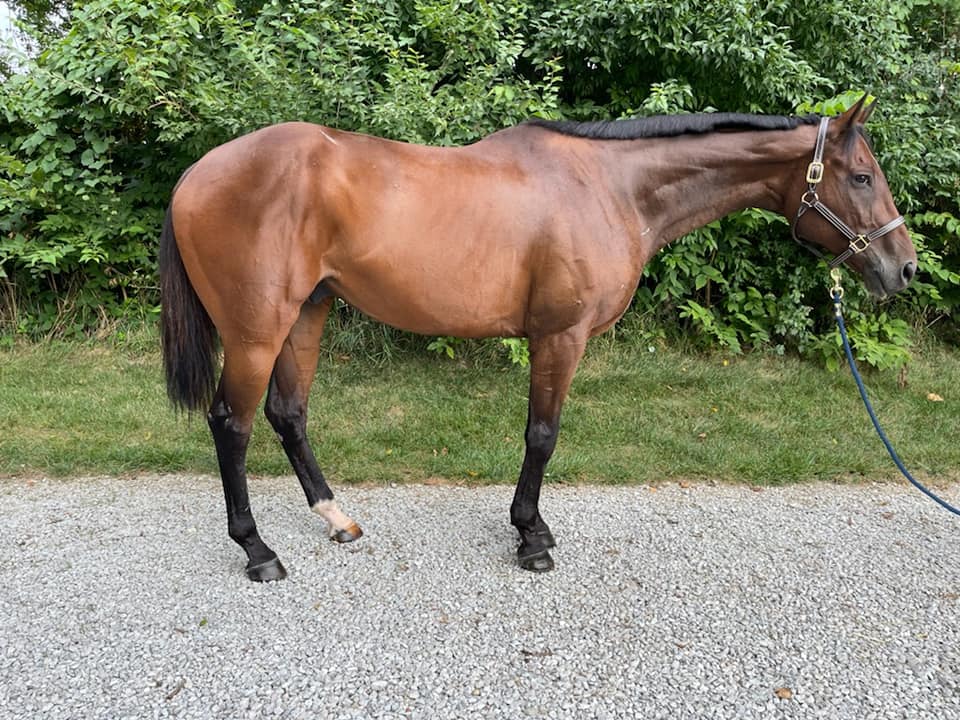You can ride a horse with stringhalt, but you have to know how wrong your horse is. Horses suffering from classic stringhalt seldom recover and often diminish over time. The illness generally affects one of the back legs, but both legs are involved in some instances.
Contents
What Is Stringhalt In Horses?
Stringhalt causes the horse’s rear leg to flex excessively when walking, causing it to collide with its belly. The animal suspends its limb more than it does in a regular action in this situation. It also swiftly retracts the stem, smacking the ground flat and forcefully.
As a result, stringhalt is a painless neuropathic disease, as seen by this strange hind limb gait. When your horse walks forward or backward, you’ll notice this.
Initially, I assumed the horse had shivers, EPM, stifle, or a locked patella. You might also be curious about the distinction between shivers and stringhalt in horses. Continue reading for more information.
Shivers
Shivers are similar to stringhalt in that they both require a rapid upward bending of the hind leg when backing up and moving off. On the other hand, shivers entail the horse’s muscles twitching and tail raising when performing that aberrant action, but it does not touch the ground forcefully.
Stringhalt’s History
Stringhalt is an age-old illness that was first documented in the Renaissance period in horses and hooved animals. It is an excessive contraction of the digital extensor muscles, especially when these muscles do not have enough opposition.
Clinical Signs
Your horse would most likely kick its abdomen with its hind leg before smacking the ground hard. It is most noticeable while the horse is backing up or turning. It may also affect the two rear legs, and in severe cases, the disease may extend to the forelegs.
Possible Causes Of Stringhalt
Stringhalt is a neurological problem in horses. It is caused by nerve injury, which results in aberrant spindle activity. These sensory receptors are in charge of detecting changes in muscle length.
When the horse is moving, various muscles contract differently, either early or late. It indicates that the horse is suffering from a toxicity-related neurological illness. The unusual gait may worsen, necessitating euthanasia, especially if the animal becomes seriously handicapped.
Types Of Stringhalt
Australian Stringhalt
The illness is caused by ingesting poisonous plants such as common dandelion, cheeseweed, and tiny mallow; however, flat weed is the primary cause of stringhalt. These weeds are not highly poisonous in general; nevertheless, their toxic levels may rise owing to specific environmental circumstances.
For example, you are more likely to observe this behavior in cold weather, and the symptoms are predicted to diminish in warmer weather. This condition affects both the hind legs and, in severe cases, the front legs.
After stopping consuming these poisonous herbs, the animal may recover over time. For example, there were two severe epidemics in Brazil, and Jose Allan Soares de Araujo, a veterinary hospital researcher, performed a study during that time. During this period, he gave flat weed to a young horse.
As a result, the horse exhibited stringhalt symptoms after three weeks and improved slightly once the plant was withdrawn from its meals. This appears to confirm that the suspicious plant caused the illness.
As a result, if you observe this condition, you should watch what your horse is eating and offer a high-quality diet to help it recover. You may also need to use laxatives to cleanse the system or remove marijuana from the animal’s gastrointestinal tract to avoid absorption.
Classic Stringhalt
Stringhalt is not caused by plant poisoning but by back or neck injuries. Its origins, however, remain a mystery. As a result, the damage to its neck, back, or leg might be the cause of this ailment. Stringhalt clinical symptoms are likely to improve after these injuries heal.
The animal abruptly pulls its limb upward and lowers it to the ground. In typical stringhalt, the movement can be moderate or severe when the injury worsens or when it feels substantial discomfort in its hind foot that originates from the stifle or hock.
In other cases, there may be no damage, making determining the etiology of the condition challenging. As a result, the veterinarian may explore alternative options, such as osteochondritis dissecans (OCD), a cartilage disease at the joints. They may also believe that the condition is caused by Arthritis or degenerative joint disease. As a result, continual training or hard labor may aggravate the condition.
As a result, your horse may never recover in this situation because the illness worsens over time. It might start with one rear leg and work its way up to the second and forelegs.
Botox, anticonvulsant medications, muscle relaxants, and surgery are some of the treatments available. Unfortunately, there is no assurance that your horse will totally recover. As a result, riding it or doing any ground maneuvers is not recommended.
However, if the horse is often used in the field, a complete neuromuscular evaluation is required first, as riding a horse with stringhalt is highly dangerous.
Conclusion
Stringhalt is a syndrome that affects the horse’s hind limbs, causing the horse to grab the leg upwards towards his belly when urged to move after a period of inactivity.
Stringhalt is particularly evident in dressage horses at the walk, where the movement is scored down for irregularity in the rhythm.

